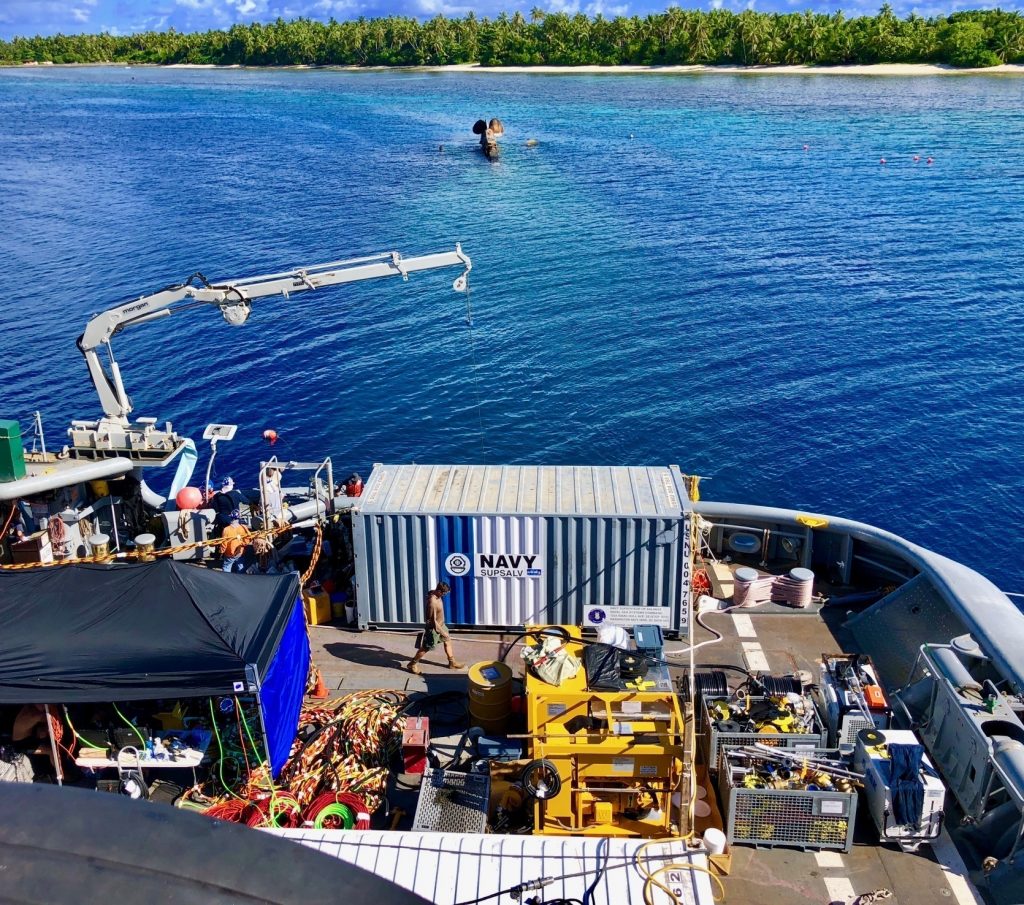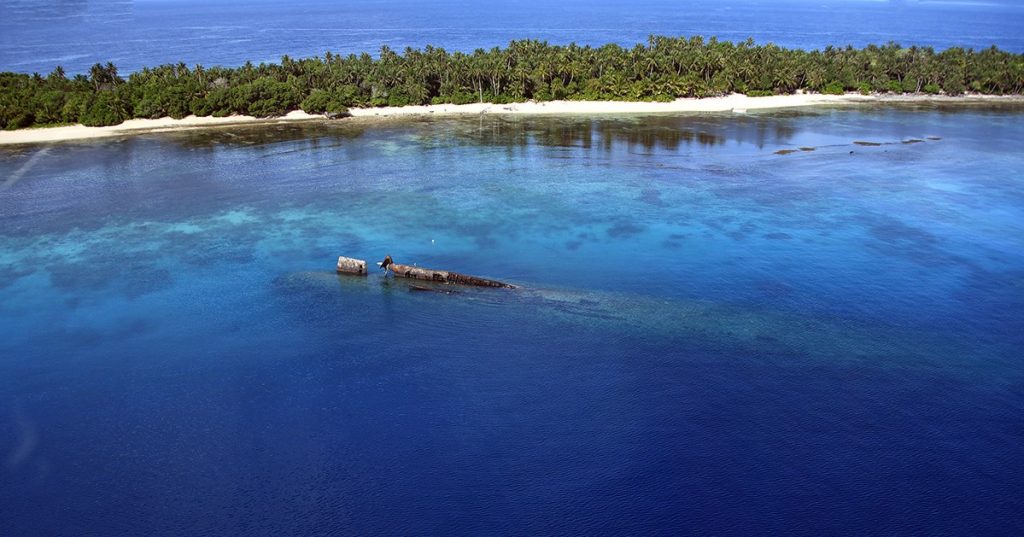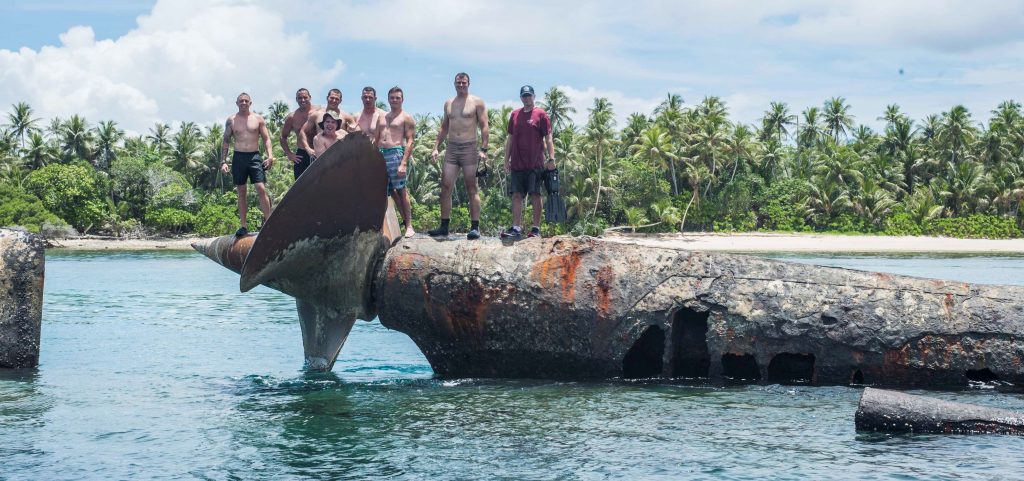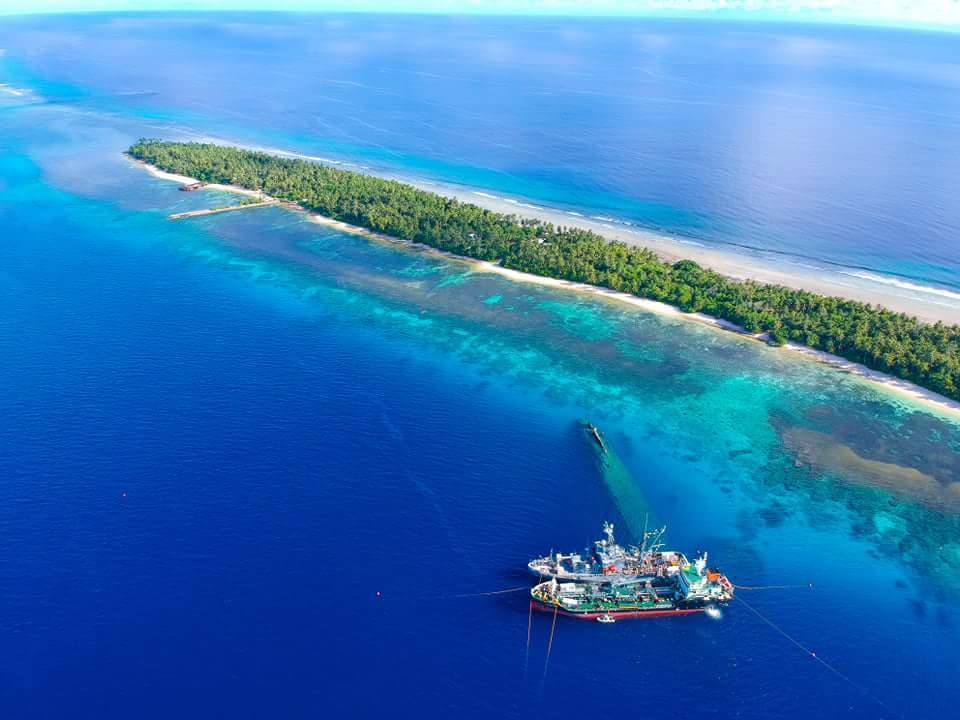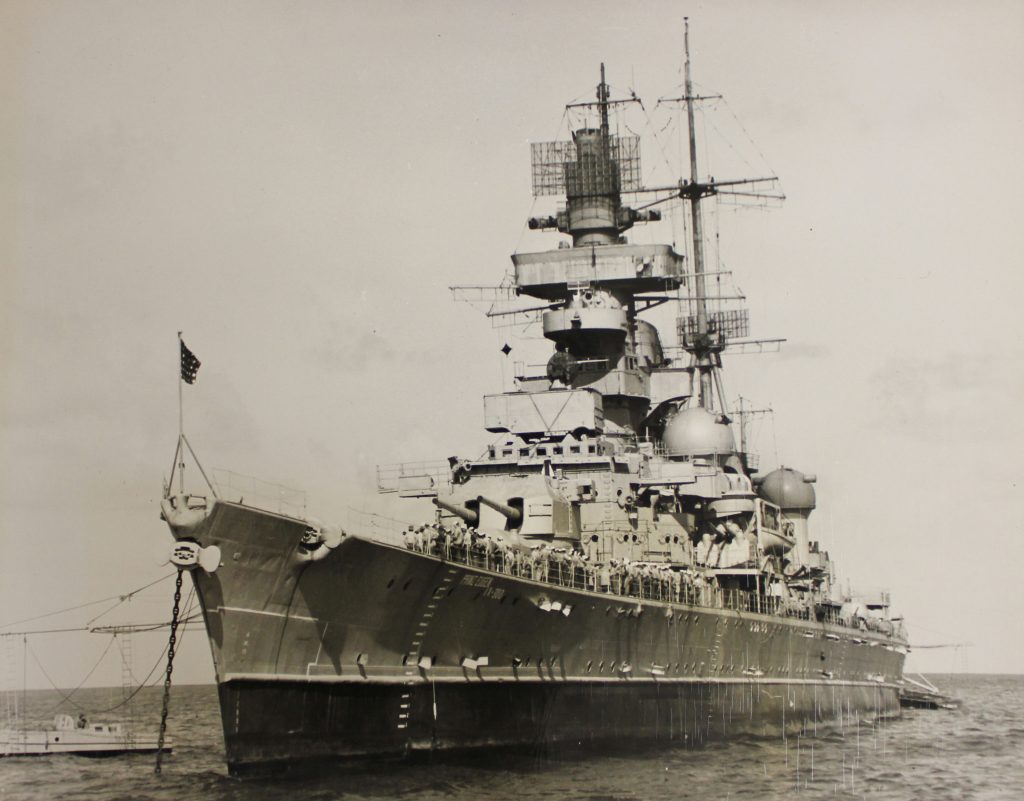
Sometime just before the July atom bomb tests over Bikini Atoll, 1946. The USS Prinz Eugen awaits its fate.
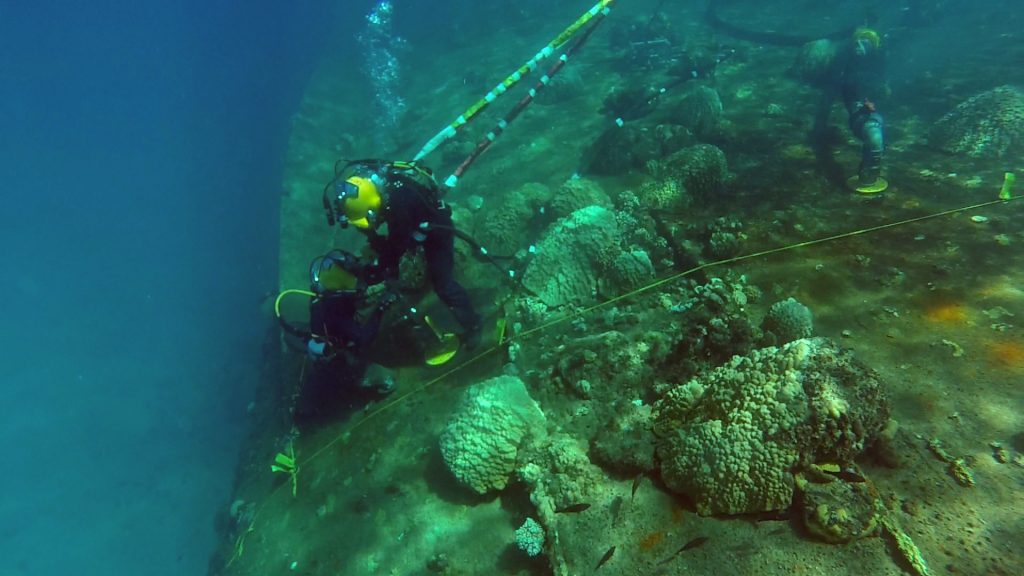
Removing fuel oil from the former, and seemingly indestructible, German cruiser Prinz Eugen. U.S. Navy photo by Petty Officer Second Class Joshua Fulton, 07SEP2018.
“There are no longer active leaks with 95 percent of the potential oil volume having been removed. Any remaining oil is enclosed in a few internal tanks without leakage and are well protected with multiple barriers of ship construction. Of the 173 total oil tanks, the 159 external tanks have been pumped of all appreciable amount of oil or were found empty.”-Lieutenant Commander Tim Emge, USN officer-in-charge of salvage operations
In October 2018, at Enubuj Island in Kwajalein Atoll, Marshall Islands, the U.S. Mobile Diving Salvage Unit declared the recovery of fuel oil from the nuclear blasted DKM Prince Eugen completed.
Since radiation levels emanating from the nuclear weapons testing victim were deemed safe enough for humans to dive on, the Republic of the Marshall Islands (the official owner of Prince Eugen since 1986) demanded that the 250-thousand gallons of fuel oil onboard be removed.
The DeutcheKriegsMarine (DKM) Prinz Eugen still has an ongoing radical life story. Fighting alongside Bismarck at the beginning of World War Two, then surviving numerous bomb and torpedo attacks by the British, surviving the war after fighting the Soviet advance upon Germany to be surrendered to the British empire, which then turned it over to the U.S. Navy where it became the USS Prinz Eugen IX-300.
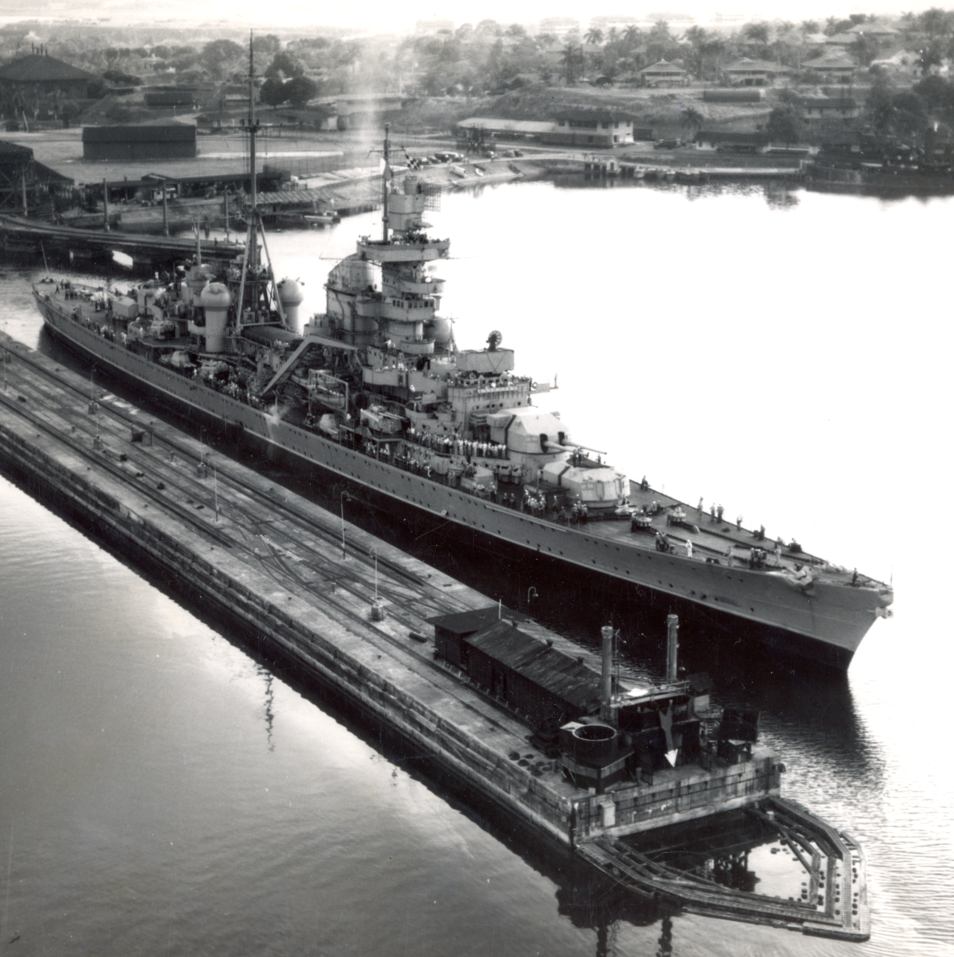
Sometime between March and July 1946, USS Prinz Eugen in the Panama Canal, on its way to Bikini Atoll.
According to the U.S. National Park Service, the guns from Turret A and the fire control tower were removed before the atomic testing, at the Philadelphia Navy Yard in February-March 1946, as a kind of before-after control.
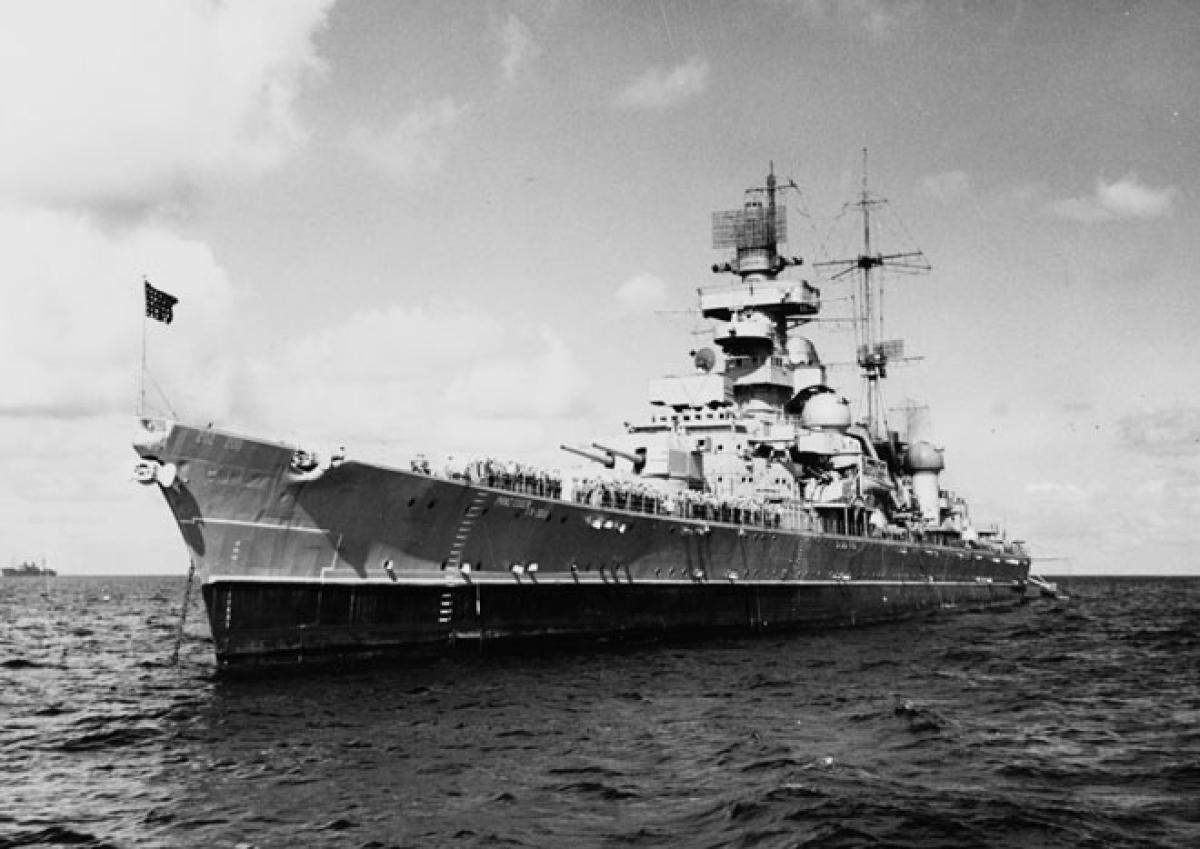
USS Prinz Eugen.
In July 1946, possibly because the USN was having trouble with the Eugen’s boilers, it was decided to drop The Bomb on it. Amazingly Eugen survived not one, but two nuclear bomb blasts (Able Day and Baker Day).
Color USN Navy film from 20AUG1946, by Photographer’s Mate W.J. Gibson, towing the nuclear blasted USS Prinz Eugen to its impending (and not expected) doom by capsizing, from Bikini to Kwajalein (quality of film is not good). You might notice USN personnel walking about the radioactive ship:
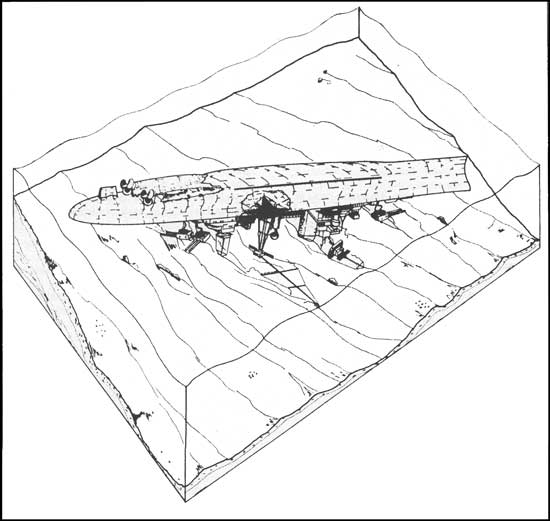 However, after being towed back to Enubuj Island, Eugen suddenly capsized and sank, next to Carlson Island.
However, after being towed back to Enubuj Island, Eugen suddenly capsized and sank, next to Carlson Island.
Edited from U.S. Army promotional film about working on the Kwajalein Missile Test Site, from Summer 1972, showing the capsized Eugen which still has all of its screws (props):
Since 1979 various parts have been salvaged by various organizations.
This pic is from 2016, divers assigned to Defense POW/MIA Accounting Agency, and 7th Engineer Dive from Hawaii, pose for a group photo at the wreck site of the German cruiser Prinz Eugen in the water off U.S. Army Garrison Kwajalein Atoll.
In 2010, Republic of the Marshall Islands wanted the fuel oil still onboard removed for environmental reasons. The fuel oil recovery began in February 2018 and ended in October 2018.
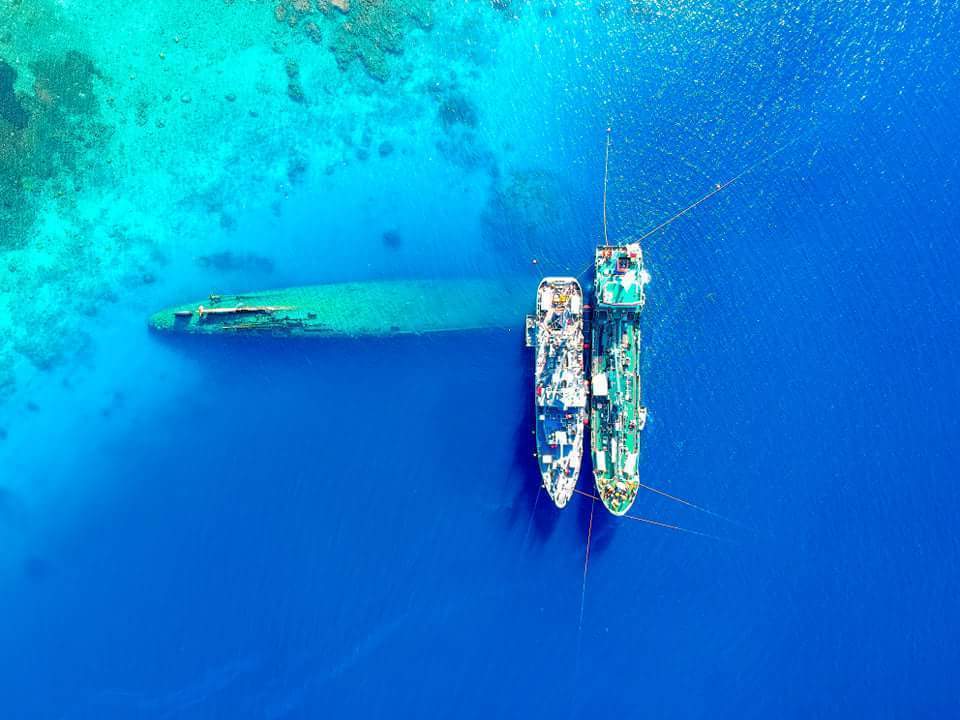
It took nine anchors to hold the two recovery ships over Eugen, while the oil was being extracted. USN photo by LeighAhn Ferrari, 04SEP2018.

